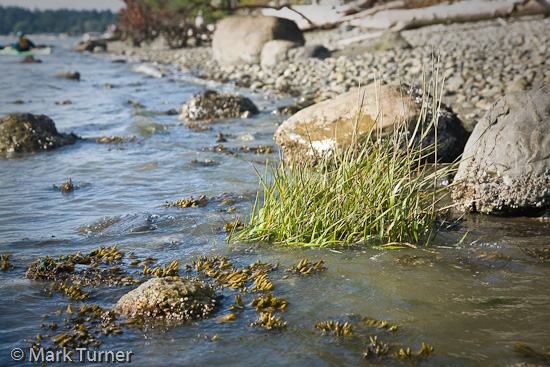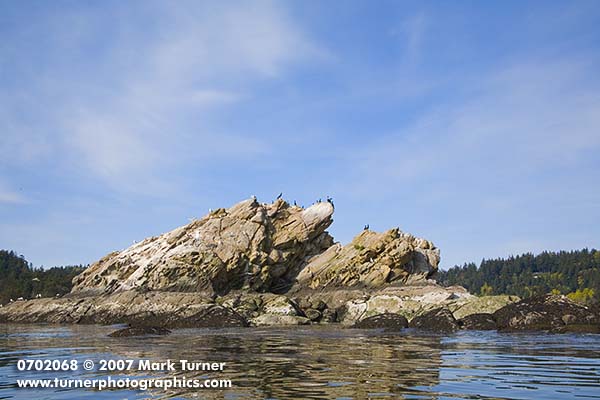Spartina

Common Cordgrass, Spartina anglica, is one of the aquatic scourges of Puget Sound. One of three species of Spartina that have been introduced to the west coast, it aggressively alters its habitat by trapping sediment and raising the shoreline. As a result, productive mudflats disappear, invertebrates die, and the birds that depend on them have no food source.
Fortunately, there is a major program underway in Washington to wipe out the Spartina invasion. There has been major progress in the past four or five years, primarily through a combination of herbicide spraying and mowing. Spartina spreads both by floating seeds that can travel long distances and rhizomatous roots.
Last Saturday a group of us that had sup board packages, joined in a shoreline survey along Deadman and Little Deadman Islands in Skagit Bay south of Snee-oosh Point looking for Spartina. We really hoped we wouldn’t find any, but our group located several small clumps. Each one was only about a meter across and they were widely dispersed. We recorded the locations with GPS coordinates, which will be passed along to an erdication crew that will come in and spray. We surveyed by kayak on a rising tide so we could get close to the shore, travel slowly, and make careful observations. In a couple of cases we thought we saw clumps of Spartina that turned out upon closer observation to be good native plants.
For further information about Spartina visit Common Cordgrass on the Washington Noxious Weed Control Board website.


